Abstract
Mobile dining businesses prepare meals and snacks for instant eating from automobiles or non-motorized trolleys. Food trucks, mobile refreshment kiosks, hot dog carts, and ice cream trucks are the industry’s most common modes of operation. At the same time, there is no single company that appears to dominate the industry. The sector is segmented according to data by IBISWorld, as the top businesses contribute for less than 35% of sales.
Food truck businesses compete against traditional brick-and-mortar eateries, specialized cafes and supermarkets, and convenience stores that offer refreshments and other processed food. These factors have been accounted for in this business plan in which I explore how I intend to open a successful food truck business called Quick Bites.
Introduction
The U.S. mobile dining industry has witnessed significant growth in the past few years. However, the industry has been affected significantly since the COVID-19 pandemic started. These negative impacts in the sector have been occasioned by strict COVID 19 measures and protocols such as restricted movement of persons and ban on public gatherings. This is a worrying trend for individuals seeking to enter the industry.
Overall the U.S. mobile food services industry includes more than 5900 establishments with combined annual revenue of about $1.2 billion (Hait, 2020). While these figures are attractive, my reasons for joining the sector are driven by different factors, as illustrated in the next section. I plan to expand my business across entire West Florida as I feel there is continued dissatisfaction with consumer needs regarding food services provided by restaurants.
Executive Summary
Quick Bites is a food truck company based in Southwest Florida that sells a range of Cuban cuisine items via our sustainable food trucks that purely utilize plant-based oils. Our main food items, including rice, beans, meat, and Cuban cocktails. The business will be backed through loan finance. A minimum amount of $134,350 is necessary to guarantee the business’s smooth launch. Most of the funding would come from a loan financing agreement with reputable financial institutions with whom the owner wants to do business.
A significant portion of the venture funds will be used to acquire one food truck, a company location or office, and necessary equipment. Other responsibilities will involve salary payment and promoting our firm using both digital and print media. As part of our growth goals, we want to franchise our food truck company within three years of its inception. With the proper techniques, we may spread our business throughout many states in the United States. Unlike restaurants, all kinds of payments will be accepted, including cash, cryptocurrency (mainly Bitcoin), point of sale (POS) payments for services, card payments, cheques, and phone and online purchases.
Reasons for choosing a food Truck
Unlike restaurants, all kinds of payments will be accepted, including cash, cryptocurrency (mainly Bitcoin), point of sale (POS) payments for services, card payments, cheques, and phone and online purchases. When compared to owning a typical restaurant, owning a food truck has several advantages. For example, the initial start-up expenses would be significantly lower as some food truck owners choose to lease their vehicles instead of purchasing their food truck entirely, which may be costly (Lemon, 2017).
In addition, food trucks require smaller goods to kick start operations, making them more cost-effective (Rhodes, 2021). The cost of labor would be reduced in establishing food trucks compared to a building that occupies a lot of space and requires considerable capital. There is no employee compensation in this business as the labor required is low as compared to eateries.
Moreover, an essential aspect of the food truck business is that it is self-marketable in that the operator can travel to their client’s locations. If the company chooses to rely only on social media for its marketing efforts, this may be advantageous for media personalities. The tax rate levied is relatively smaller for food trucks compared to the restaurants’ which is much higher (Schifeling & Demetry, 2021). However, food trucks also have some disadvantages; for example, a food truck consumes a lot of time and requires dedication (Holmes et al., 2018). Nonetheless, the advantages of operating a food truck outweigh those of running a restaurant, especially for budding entrepreneurs.
Our Mission
To serve delectable meals in a comfortable yet stylish, sophisticated, and upmarket atmosphere.
Our Vision
To provide outstanding service that creates a long-lasting impression on our customers and the broader Southwest Florida community.
Objectives
- Quick Bites will stand apart from other specialty rice, beans, meat, and beverages food trucks and restaurants in South West Florida by creating a trendy, modern, and upmarket atmosphere.
- Improving awareness of all that Quick Bites has to offer in our neighborhood.
- To create an ambiance that brings individuals of different interests and origins together, improving the pleasure of a beautiful meal.
Keys to Success
- Quick Bites’ success will be aided by the following:
- Keeping a clean and trustworthy image in the local area.
- Maintaining high-quality food and service of the highest degree.
- It will ensure that prices are competitive within the South West Florida region.
- Good centralized location in the metropolitan area of southwest Florida.
Company Summary
Quick Bites will be incorporated as a Southwest Florida corporation with its chief operator, FOUNDER’S NAME, as the only shareholder. The firm will concentrate on subjects that have broad appeal.
Products and Sourcing
The Quick Bites menu will contain a diverse assortment of high-quality flavored and premium meats and rice, as well as classic menu items influenced by the proprietors’ extensive Cuban cuisine knowledge. Everything on the menu is cooked in-house, and the company’s goal to customers is to provide the highest quality rice, beans, meat, and beverages at an accessible price. Quick Bites will maintain the highest standards of quality. The firm will hold a restricted license that will permit the sale of rice, beans, meat, and Cuban cocktails.
Quick Bites intends to acquire its products from Southwest Florida farmers’ markets and occasionally from local grocery stores. The owner also intends to venture into farming to grow organic veggies and spices. We shall utilize only the finest ingredients to create exquisite meal offerings. We want to create and nurture a strong working rapport with various suppliers with whom we collaborate to guarantee that our stock requirements are handled in the most cost-effective way possible.
Market Analysis
Industry Summary
Throughout the coronavirus epidemic, mobile dining mixed with order-ahead eating has become a popular concept. Many food trucks have incurred financial losses harmed by social distancing regulations that prohibit large lineups and the pedestrian traffic they depend on. Others have used technology to assist consumers in planning and adapting to changing situations. Overall, Order-ahead purchases accounted for up to half of income during the COVID-19 outbreak. Data by IBISWorld indicates that the food truck business employs 38,064 people presently (IBISWorld, 2021). There has been a 6 percent growth in the number of individuals working in the business over the last four years. Despite this predicted growth, food truck firms now hire an average of 1.2 individuals (IBISWorld, 2021). However, modestly to other small enterprises, the rise over the previous four years is an encouraging sign.
Potential food truck entrepreneurs should keep in mind that a food truck is a major venture requiring getting several licenses and adhering to strict safety regulations. The typical cost of launching a food truck is $50,000 to $70,000 (IBISWorld, 2021). Quick Bites intends to raise double this amount or even more. Before beginning their firm, potential entrepreneurs should have a defined strategic plan, new menu items, and a target demographic in mind. Although food trucks generate considerable long-term income flows, operators should be mindful of the high start-up expenditures. A food truck’s estimated income is $290,000 per year (IBISWorld, 2021).
This number indicates the potential for development in the food truck sector, and it is expected to rise further in the next couple of years. Food trucks are promoting themselves as a more inexpensive alternative to conventional eateries for prospective food company operators (Yoon & Chung, 2018). While firms may experience growth challenges, the food truck sector’s long-haul prospects are promising.
Food truck licenses take approximately 37 business days to be processed. This information is crucial when launching a food truck company in a particular location. Businesses will create a schedule and better manage their budget upon knowing the types of permits required. A list of vehicle licenses, business licenses, and operating permissions for the truck may be obtained from local municipal and state offices. Licenses, permits, and continuing legal compliance for food trucks are anticipated to cost over $28,200 (IBISWorld, 2021). It is vital to observe health and safety laws while operating a food truck company. Substantially, legislative restrictions differ wildly by city, which is why market professionals advise company owners to analyze their location choices meticulously. Accordingly, Quick Bites owner used these insights to select Southwest Florida as the ideal location.
Market Segmentation
U.S. food truck customers are divided into four age groups. These are; those below the age of 25 (19.6 percent ), those in the 25 and 44 age group (43 percent), those in the 45 and 54 age group (17.7%), and above age 55 (19.2%) (Myrick, 2016). Two key market sectors appeal to Quick Bites’ owners and are explained below:
- Young Adults – Quick Bites will attract single individuals and young couples because of its closeness to South West Florida. Individuals will want to make sure they have somewhere nearby to stop for food and drink before and after their hectic day. Quick Bites will eliminate this inconvenience since it will not be stationary will be able to move from point to point, thus accessible to many customers. Consumers in this demographic will be in the 19-38-year-old range. The later it gets in the afternoon, the more grown-ups will enjoy Quick Bites’ change in pace and fun. This expansion is expected to be in unison with the rate of growth of the South West Florida Metropolitan and a rise in attractiveness.
- Mature Adults – As the number of mature but stylish adults grows, Quick Bites ensures a natural evolution from young adults to senior adults. Quick Bites hopes to achieve a five percent yearly rise in sales from this category through word of mouth.
Quick Bites’ target market categories are depicted in the following charts and tables, along with yearly growth estimates.
Table: Target Market Analysis.
Target Market Segment Strategy
Quick Bites’ business model provides excellent customer service to the firm’s targeted niche customers. The mobile food truck industry caters to a wide range of demographics and markets. Thus, Quick Bites does not seek to impose any restrictions on the size and influence of the food company in any way. By catering to as many markets as possible, the food truck company will optimize profits and sales. These examples include building sites, university campuses, funfairs, sporting venues, recreational centers, shopping complexes, and theaters.
Competition
Competition is an unavoidable aspect of operating a mobile food company. According to Cvitkovic (2016), competition is not always harmful; however, it must not be underestimated. As a business, we understand the importance of distinguishing between direct and indirect rivals. Quick Bites has competition from both direct and indirect outlets. Direct rivals are firms that provide similar goods and/or services to clients as we do, as well as those that serve the same group of consumers (Thompson, 2018).
In Southwest Florida, our direct rivals include the following: ‘INSERT NAME.’ These establishments function as food trucks or quick informal restaurants serving the same menu. Research has shown that when consumers are considering which truck to purchase from, they will almost certainly evaluate pricing and service quality (Shin et al., 2019). Indirect rivals in the mobile dining sector are pretty challenging to identify. However, we believe that most of our indirect competition will be food trucks serving similar dishes to ours.
Competitive Edge
The business hopes to gain a competitive advantage in its new primary market sector by strengthening the degree of client engagement and service. A random spot check of existing food truck businesses has shown that this is a quality that rivals appear to lack regularly. Furthermore, Quick Bites has the requisite expertise to prepare the highest-quality Cuban foods not available within Southwest Florida. The implementation of the already specified operational procedures will improve the interactions that enhance word-of-mouth advertising. More importantly, Quick Bites aims to increase its social media presence by active social networking platforms like Facebook, Instagram, Twitter, and others.
Marketing Strategy
To this end, Quick Bites will rely heavily on marketing as the primary means of acquiring new clients:
- Marketing: Quick Bites will create a strong positioning phrase for the brand. For example, “Your First Choice Food Truck For Tasty Cuban Bites.”
- Mega launch event: Quick Bites will devote a significant percentage of our advertising budget towards the mega launch event. Local and upcoming artists will headline the event.
- Direct marketing: Quick Bites will target hotels, universities and colleges, sports stadiums, and music events like concerts in the area.
Quick Bites will develop an identity-driven marketing plan that will include implementations in the local press and newspaper advertisements and on-site offers. The success of the subsequent campaigns will be determined by surveying consumers to determine how they learned about Quick Bites after the first ninety days of service. Budget modifications will be made in response to the results. Additionally, advertisements will be placed in regional publications serving Southwest Florida and the neighboring areas. In general, these techniques can be summarized as follows:
Positioning
Quick Bites’ Food Truck is the preferred option for business individuals aged 19 to 38 in Southwest Florida. Consumers may order a meal prepared with elevated ingredients and presented in a generous amount for a reasonable price at Donny’s Food Truck. Consistently, on a lunch hour with coworkers, Quick Bites’ Truck will cater to professionals who have limited time to eat and want a wider variety of food alternatives in one location.
Promotion
Our affiliations with ‘INSERT NAME’ permit us to utilize other institutions’ consumer bases to expand our own. For example, we want to provide samples and incentives, and vouchers to clients who buy beverages at such establishments. Moreover, throughout the first several months of operation, we will distribute and display fliers in high-traffic locations. Additionally, we want to use traditional social media channels to host competitions and promote marketing events to spread the word about our firm.
Distribution
At the moment, the delivery point is our lone food truck, which will be stationed in various places to accommodate demand. The food truck will indeed be situated in the business center through the week and at ‘INSERT NAME’ on weekends. We want to create a second food truck if demand exceeds supply.
Operations Plan
Quick Bites’ marketing strategy requires the company to do a wide range of tasks, such as the following:
Administrative Functions
Legal, marketing, and bookkeeping are all examples of general and administrative duties. The company must obtain a professional license and permit to run efficiently, including food handling permits. Additionally, the administration works towards finding what permissions and licenses are necessary for the region by collaborating with several other food truck entrepreneurs in the area (Greene, 2016). Managers will also make sure that the bookkeeper knows the food trucks to prevent a huge tax bill. Therefore, the administration will support the bookkeeper in constructing an orderly system that facilitates tax filings. The likely licenses that will be required may comprise business license, vehicle license, and Health Department Permit. The latter will also include acquiring a commissary letter of agreement.
Acquiring and Storing the Necessary Supplies
Managers plan and organize storage arrangements ahead of time to take full advantage of the money. The lack of warehousing and cooler capacity is a big problem for any food truck (Thompson, 2018). The best way to support a well-thought-out storage plan is to minimize and carefully choose additional equipment. Since restricting the number of menu items makes it easier to track how much each product is used in each dish, managers can conveniently maintain their inventory and sales. They also track how much food they can preserve and how long it will last when they limit the number of menu items they provide.
Hiring and Training Staff
The success of a food truck is directly related to the quality of its crew. While it may sound like a simple duty for a food truck owner, it is one of the most challenging (Fahlevi et al., 2019). In addition to a person’s previous culinary expertise, managers will also look at their schooling and certifications (Fahlevi et al., 2019). When interviewing someone for a job, the owner will look for traits like integrity, sociability, and a strong work ethic. Imparting ideal desired behavior and attitude on new employees can be challenging due to their diversity (Rodriguez & Walters, 2017). Fortunately, the owner is a culturally aware individual; hence this is unlikely to cause any problems. The company will ensure that it creates a visible and attention-grabbing vacancy poster (Broadbridge & Fielden, 2018). Accordingly, the proposed hiring poster is attached in the Appendix.
All staff should be familiar with the company’s unique practices. Orienting new workers to the company’s policies and processes helps them understand their roles and responsibilities. (Fahlevi et al., 2019). Everybody is kept on the same page by conducting refresher courses for current employees and conducting extra training sessions when processes change. Policies and practices will cover everything from time monitoring to scheduling to breaks to reporting.
Kitchen Functions
In the kitchen, the chef is ultimately accountable for all that happens there. Therefore, when teaching the cooks, the chef should always be involved. Every day, the chef is in charge of preparing the meal as well as purchasing the necessary ingredients and equipment. In the rear of the house, kitchen employees weigh and measure supplies and mix and filter soups and sauces. They also wash, peel, and slice fruits and vegetables and create salads. Meat must also be washed and chopped or ground properly before it is cooked.
Food Truck/Retail Functions
Retail food is often sold by sales personnel who accept the first order and then transmit it to the producer or wholesaler, who then ships the food to the customer. In addition, the food company or a certified distributor may employ sales agents. The food is then shipped out in a variety of vehicles after the order is confirmed. To keep up with demand, most retail food businesses get at least one shipment of retail cuisine per week.
Implementation Strategy
Quick Bites’ primary techniques for ensuring exceptional service include bimonthly service training, staff gratitude, and higher service employee ratios. The company’s unique training programs include management-level employees for lifetime education, a worker for life training, and success stories between employees and management. The second method employed by Quick Bites is to organize community engagement programs and participate in outdoor events. Such events will comprise dynamic entertainment, continuous visual appeal, and unique interactive programs. Quick Bites’ signature programs for interactive entertainment and continual sensory appeal include frequent contests, games, music, and sporting events conducted by an outdoor-house D.J. In addition, with a range of occasional entertainment events and community programs, Quick Bites will become a household name throughout Southwest Florida.
Quick Bites’ technique for keeping its promises is perhaps the most critical. Continuous value-based coaching, preservation, and attention to detail require techniques, notably, once created prominence. By empowering service workers to resolve issues without requiring client consultation with the administration, the firm develops a win-win scenario for both the client and the restaurant. Constant and never-ending advancement is a priority at Quick Bites, as evidenced by the company’s regular practice sessions and conferences. Given that value equals the sum of the services provided, excluding the amount charged, it is critical to go above the simple act of serving meals in a room filled with lights and sound; the business must make a lasting impact.
- Reiterate the importance of outstanding service — quick Bites must demonstrate to customers that exceptional service is still available and should be anticipated as part of the meal experience. In addition, quick Bites must distinguish themselves from mediocre services.
- Place a premium on an enjoyable experience — by ensuring that all guests have a good time; Quick Bites may increase market share via repeat business.
- Market segmentation — Quick Bites’ marketing and concepts of mass appeal and musical enjoyment will appeal to the firm’s target market categories.
- Distinguish yourself from the competition and follow through on your promises.
Personnel Plan
The staffing strategy presently allows for a total of two chefs and one operator. The operator’s responsibilities will include welcoming diners, taking orders, and assisting the cooks. The operator will be the proprietor, which means he will accept orders, collect money, and interact with customers. It is assumed that the food truck would employ just two people to perform and supervise activities for the first year. As sales grow, we will acquire an additional food truck and recruit an assistant to take over the operator’s responsibilities. A second assistant will be hired the following year to assist the two chefs. The Staffing Plan emphasizes the goal of maintaining an adequate supply of service personnel. As indicated in the Staffing Plan, the firm anticipates gradually increasing its commitment to service employees throughout the next three years while constantly considering the number of clients requiring care at the food truck.
Table: Personnel.
SWOT Analysis
The evaluation gives Quick Bites the opportunities to assess the internal strengths and weaknesses that the company must improve upon. Quick Bites can also benefit from this tool since it helps them evaluate both the opportunities and the risks.
Strengths
- Maintaining strong business ties with suppliers who provide favorable financing terms, flexibility, and quick response to particular product requirements.
- Extensive space needs in a desirable location in Southwest Florida that allows for flexibility while maintaining a pleasant and appealing, inviting environment.
- Strong merchandising and product presentation advisors already operating in the industry.
- Strong referral connections with like-minded food truck owners.
Weaknesses
- Obtaining start-up money is essential.
- The owner will be working his way up the high-end food truck in Southwest Florida.
- The difficulties associated with the seasonality of the business (tourist, vacations, etc.).
Opportunities
- Expanding market with a substantial portion of the company’s target market unaware of the existence of Quick Bites.
- Strategic relationships that provide referral sources and cooperative marketing initiatives that help the company expand its reach.
- Exciting activity due to the high rate of new house development in the Southwest Florida metro area.
- Shifts in consumer patterns that result in new visits and hence revenues.
- Expanding sales prospects outside the Southwest Florida metro target region include numerous smaller villages with a loyal client base.
Threats
- The potential is that other specialized Cuban food trucks may launch sooner than quick bites.
- Soaring licensing fees as a result of southwest Florida’s rapidly growing population and attractiveness.
- The economic slump has affected the food and beverage business.
- The ongoing covid-19 pandemic and ever-changing safety guidelines and restrictions such as a ban on public gatherings may impact sales.
Milestones
Quick Bites anticipates achieving the following milestones over the next 12 months:
Financial Plan
Sales Strategy
The following sections detail the sales forecasts for this project.
Sales Forecast
The charts summarize Quick Bites’ monthly and annual sales projections.
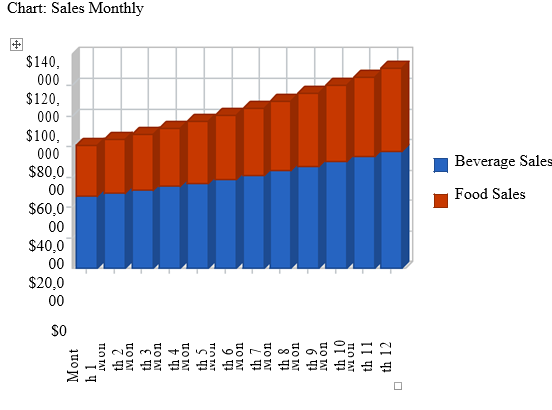
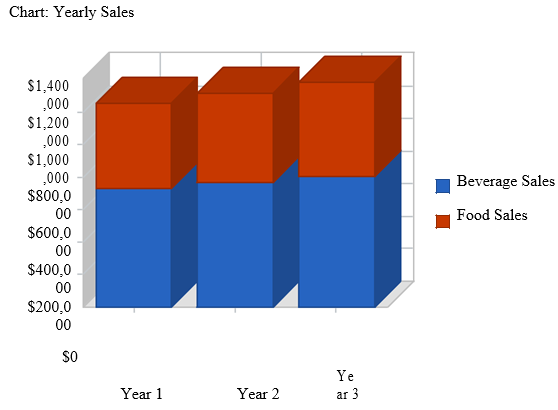
Start-up Funding
The start-up financing will be used to purchase the necessary licenses in Metropolitan South West Florida. Additionally, it will buy a new food truck with new equipment and supplies and recruit new staff. Moreover, Quick Bites will be supported primarily by the BANK NAME and owner through savings.
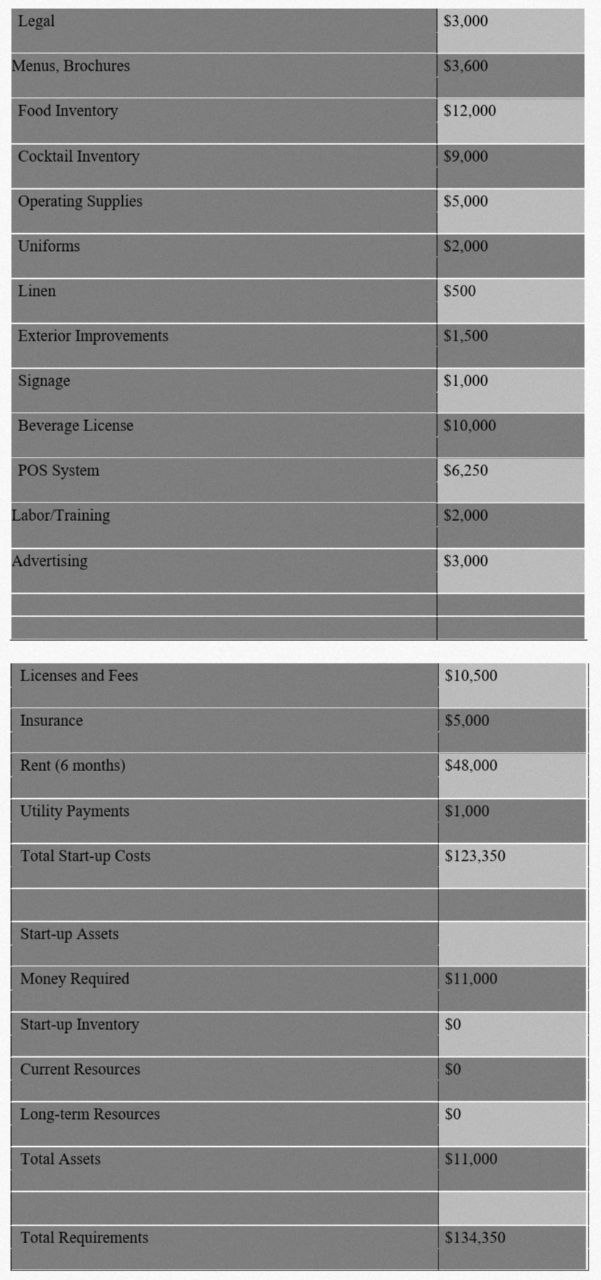
Key Assumptions
Revenues will grow at a pace of around 25% each year, with a 15% rise in sales in July and August due to a historically strong season when the temperature is warmer and customer traffic is higher. We believe that this rise will continue during the following year, owing to the projected influx of new consumers to Quick Bites Food Truck. To demonstrate the worst-case scenario, sales predictions are purposefully low. The financial plan is predicated on several critical assumptions, which are explained in the following tables. The critical underlying assumptions are as follows:
- Assuming a sluggish economy for the first year and 3% growth after that, the company expects no further significant recessions.
- Throughout the process, the firm operators anticipate that they will develop as managers, which will present itself as a flat line expenditure increase over the three timeframes, resulting in higher yearly cash flow.
- It is assumed that the firm will have accessibility to capital reserves and finance adequate to sustain financial strategy, as stated in the table.
- The business anticipates that luxury specialty rice and meat eateries in South West Florida will continue to expand in prominence, as will the rising need for rising themed and casual eating locations.
Break-even Analysis
The Break-even Assessment is calculated based on the mean of the first-year sales statistics by units and operational expenditures. Per-unit income, per-unit price, and fixed expenses are the terms used to describe these figures. The real risk may be more accurately estimated using these more cautious assumptions.
Table: Break-even Analysis.
Graph: Break-even Analysis

Projected Profit and Loss
Three years’ annual totals projected profit and loss statement for Quick Bites:
Chart: Profit Monthly.
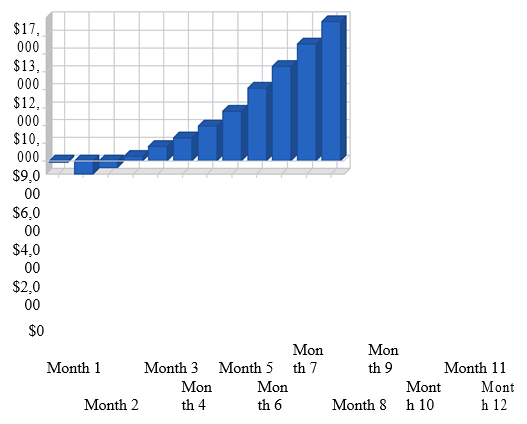
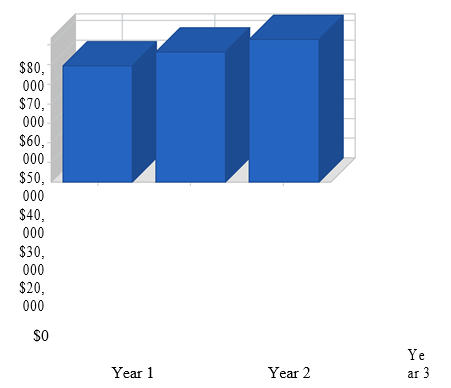
Estimated Cash Flow
The table below shows Quick Bites’ three years of annual totals.

Projected Balance Sheet
The accompanying Balance Sheet shows a strong financial standing and high net worth progression.
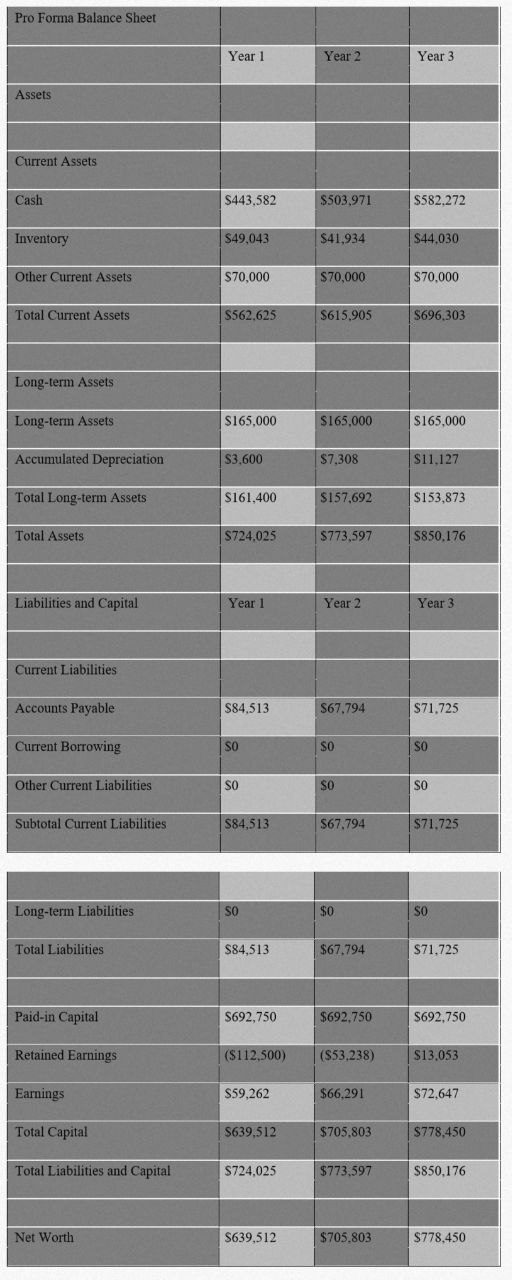
Conclusion
This report has outlined my planned business venture to open a food truck called Quick Bites in Southwest Florida. I opted for Southwest Florida’s metro area since it is rapidly expanding and sees an influx of new residents from different parts of the country each year. The fundamental reason for embarking on this endeavor is to provide nutritional, freshly made Cuban meals and beverages to my customers quickly and efficiently. Customers will enjoy a variety of new Cuban-inspired dishes such as rice and beans and meat and cocktails. Quick Bites operators have the skills necessary to make the finest Cuban cuisine available in Southwest Florida. The brand message will be “Your First Choice Food Truck For Tasty Cuban Bites” to establish and sustain an unparalleled reputation for high-quality service.
Quick Bites will provide attentive and polite service by sustaining the staff-to-customer ratio and investing in employee training and supervision. As part of the business’s expansion efforts, Quick Bites will hire additional employees in the next three years and add a second food truck. Ultimately, I hope the Quick Bites business will thrive and expand to other regions within and outside Florida. Thus, I intend to build up other branches under the same name as I anticipate that Quick Bites will become a household name. My objective is to build up a restaurant with the income I hope to acquire from the business. In general, the current focus is to build a strong foundation for the company.
References
Broadbridge, A. M., & Fielden, S. L. (2018). Research handbook of diversity and careers. Edward Elgar Publishing.
Cvitkovic, E. (2016). Competition: Forms, facts and fiction. Springer.
Fahlevi, M., Zuhri, S., Parashakti, R., & Ekhsan, M. (2019). Leadership styles of food truck businesses. Journal of Research in Business, Economics and Management, 13(2), 2437-2442. Web.
Greene, L., C. (2016). Entrepreneurship: Ideas in action. Cengage.
Hait, W. A. (2021). Fast-growing food truck industry can operate amid COVID-19 social distancing rules, no indoor seating orders. Census. Web.
Holmes, M. R., Dodds, R., Deen, G., Lubana, A., Munson, J., & Quigley, S. (2018). Local and organic food on wheels: exploring the use of local and organic food in the food truck industry. Journal of Foodservice Business Research, 21(5), 493-510. Web.
IBISWorld. (2021). Food trucks industry in the U.S. – Market Research Report. Ibisworld.com. Web.
Lemon, R. (2017). The spatial practices of food trucks. Food trucks, cultural identity, and social justice: From loncheras to lobsta love. Cambridge, 169-188.
Myrick, R. (2016). Running a food truck for dummies, (2nd Ed.). John Wiley & Sons.
Rhodes, F. (2021). Food truck business handbook: A 21st century guide for beginners to plan and run a successful mobile food business from scratch. Forrest Rhodes. Web.
Rodriguez, J., & Walters, K. (2017). The importance of training and development in employee performance and evaluation. World Wide Journal of Multidisciplinary Research and Development, 3(10), 206-212. Web.
Schifeling, T., & Demetry, D. (2021). The new food truck in town: Geographic communities and authenticity-based entrepreneurship. Organization Science, 32(1), 133-155. Web.
Shin, Y. H., Kim, H., & Severt, K. (2019). Consumer values and service quality perceptions of food truck experiences. International Journal of Hospitality Management, 79, 11-20. Web.
Thompson, I. (2018). So you want to start a business: The 7 step guide to create, start and grow your own business. Morgan James Publishing.
Yoon, B., & Chung, Y. (2018). Consumer attitude and visit intention toward food-trucks: Targeting Millennials. Journal of Foodservice Business Research, 21(2), 187-199. Web.
Appendix
Hiring Poster

